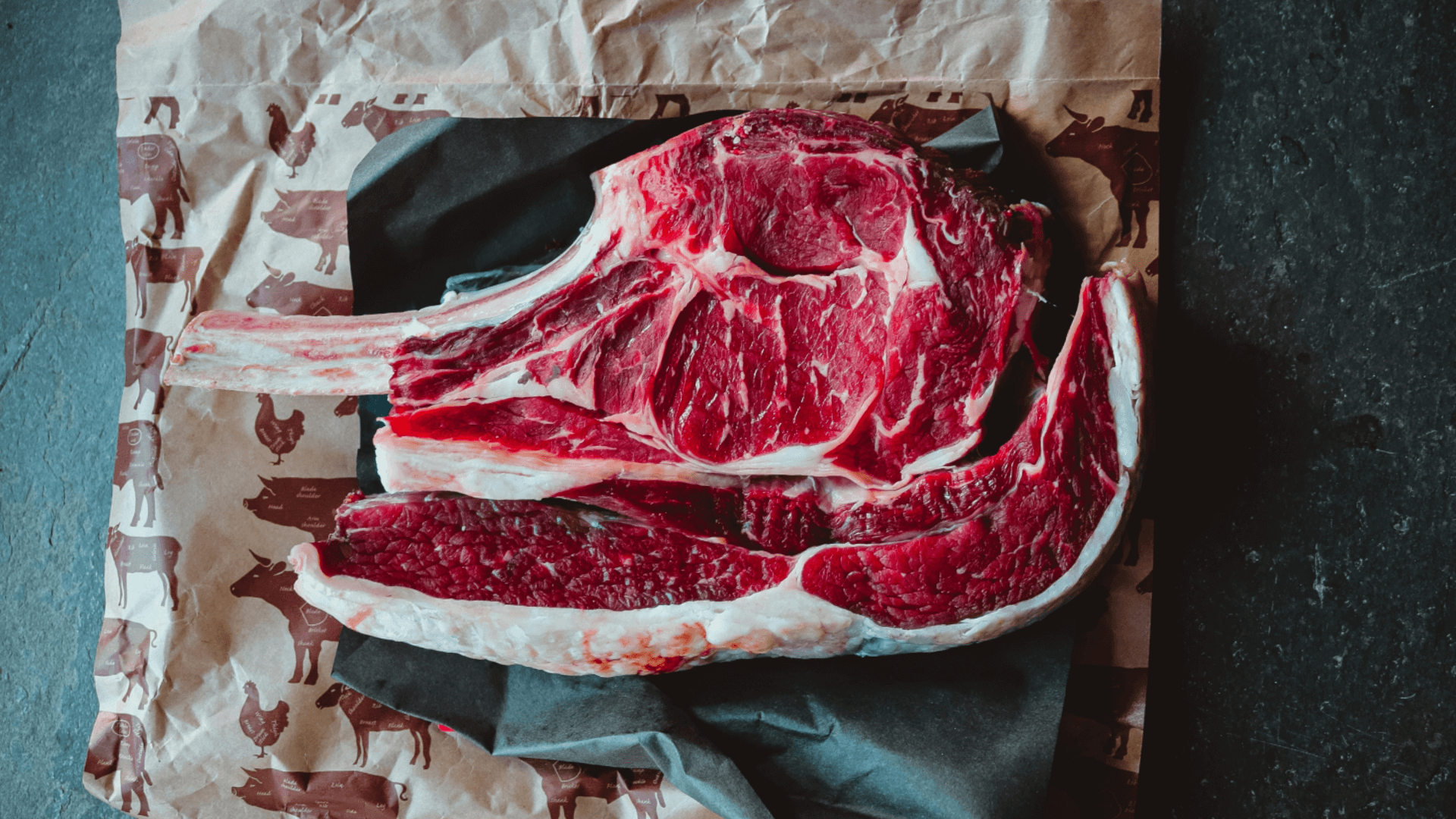There are over 1,000 breeds of cattle in the world today, and over 40 varieties bred for beef registered in South Africa. There are different rearing methods and ageing techniques, and a wide range of prices. The bemusing number of options can make choosing the right beef for you feel tricky, especially when some of those price tags are pretty hefty (we’re talking about you, wagyu). We’ll try to clear up any confusion you may have.
Wagyu beef
This type of beef has become wildly popular in recent years, with everything from lux wagyu burger bars, to artisan wagyu biltong brands popping up all over. Prices range from eyebrow-raising to bizarre, and it’s hard to know whether it’s all just a scam.
Wagyu translates to “Japanese cow”, and in fact can refer to any of four different breeds of cattle originating in Japan. These breeds are now reared all over the world, including South Africa. But in fact, only one of the four is characterised by marbling, namely the Japanese Black.
Kobe beef, another confusing category, is wagyu that is reared in the Kobe precinct in Japan, and has a (generally accurate) reputation for being the best of the best. You are very unlikely to find this in South Africa without a crazy price tag, so take any menu offering Kobe beef with a big pinch of salt.
Wagyu is famous for its high percentage of fat marbling throughout the meat, resulting in increased tenderness and flavour. This fat becomes liquid at around 30ºC, which means that at 37ºC it literally melts in your mouth. It also contains complex flavour compounds (apparently found in peaches and coconuts too!) that result in a uniquely sweet aroma and taste.
Japanese wagyu is graded according to fat content and quality, and ranges between A1 (the best) and C5 (the worst while still being certified). These ratings are not part of our South African certification system, however.
Your best bet as a consumer is to do a visual inspection for marbling. If the meat isn’t highly marbled, it’s likely not going to give you the true wagyu experience that you’re looking for. I am also skeptical of wagyu burgers, which are slightly more affordable. The mincing process means that it doesn’t matter whether the fat is intramuscular or not, it can be added separately with similar results.
Finally, be aware that the fattiest types of wagyu are likely to be the least ethically reared. Think of foie gras – a healthy, active cow is just not going to have that much fat stored in its body. Unfortunately, extreme marbling is generally achieved by restricting the movement of the cows and giving them unnecessarily nutrient-dense feed.
Aberdeen Angus beef
This is the next most sought-after beef besides wagyu. It is a Scottish breed of cattle that is now also reared all over the world. The meat is generally more marbled than other breeds. Hardy. Angus breeds come in red and black varieties: black is the one registered with official Angus boards and is what you should look for. While generally of good quality, the name alone does not guarantee it. Rearing, ageing and butchering are also crucial aspects.
Nguni and other South African breeds
Of the 40 or so registered beef breeds in South Africa, six are our very own (Afrikaner, Bonsmara, Drakensberger, Nguni, Sanga and Tulim). They are all well suited to our harsh environment, and because of this are more likely to do well in grass-fed or free-ranging conditions.
The most valued variety (predominantly for their hides but increasingly for their meat) is the Nguni. These cows are a hybrid of Indian Zebu and a few European cattle breeds, brought to South Africa as long as 8,000 years ago. They are especially hardy and well-adapted to local conditions. While the meat is considered flavourful and tender, the fat is mostly concentrated around the surface of the muscles, and so is generally very lean.
Grass-fed vs grain-fed
Now onto the rearing aspect of beef, which has a huge effect on the final product. Grain-fed or feedlot beef is likely to be your standard supermarket beef. The fat tends to be whiter and there can be more marbling, due to unhealthy lifestyles. These cows are fed on diets of corn, soy and other grains. Grain-fed beef is the biggest environmental offender in the food industry. The practice requires large areas for growing feed, which is generally grown in the cheapest way, with lots of pesticides and fertilisers. There is an added problem of waste. Feedlot manure is infamous for the large amounts of CO₂ it releases into the atmosphere.
Grass-fed beef on the other hand has a variety of positive attributes. The cows are fitter and leaner, and generally enjoy a better quality of life. The practice is considered to be more sustainable, as the manure from the cows is trodden back into the soil by the free-roaming cows, which fertilises the soil and increases the productivity of the land, releasing less CO₂. The yellowish fat is low in cholesterol, and high in Omega 3 fatty acids, which are closely linked to improving brain and heart health.
Beware though, there can be some greenwashing involved: not all grass-fed cattle are free-ranging, so be sure that you check the labelling.
Ageing
Ever wondered why your beef is pale, and not a healthy-looking red colour? This is mostly to do with ageing, as reddening occurs when the surface of the meat is exposed to oxygen. The age of the cow can also play a role (feedlot cows are generally fattened up quickly and killed younger, resulting in paler meat) as well as how active the muscles were (again, free-ranging grass-fed beef is likely to be redder). If meat is vacuum-packed quickly after butchering, it will stay paler pink or even grey.
Wet ageing is basically this: storing meat in sealed, airtight bags for up to three weeks under normal refrigeration. Dry ageing is a more complex process involving controlled low humidity and airflow on uncovered cuts of beef for up to 120 days. This results in a more “roasty”, umami flavour and increased tenderness.
When choosing your beef, it’s important to remember that the breed of the cow, while having a role to play, does not necessarily determine the quality of the meat. The best practice is to get your meat from a reputable butcher who can answer any questions you may have.



0 Comments